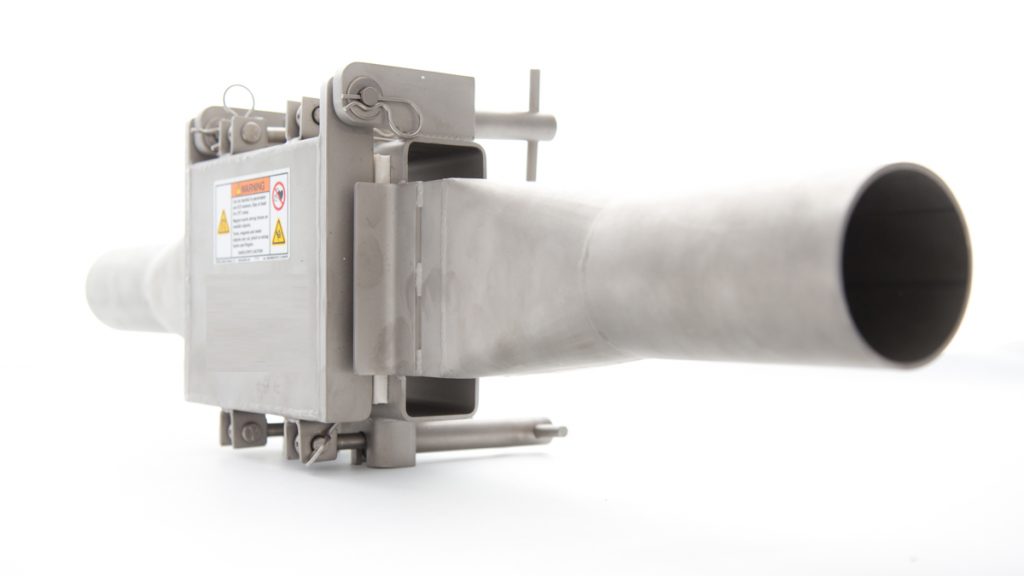Industry
Stronger ElectroMax-Plus Overband Magnet
The design objective of creating a more compact and powerful electromagnetic Overband Magnet led the Bunting engineering team to develop the ElectroMax-Plus. Electro Overband Magnets Electromagnetic Overband Magnets use an oil-cooled or air-cooled wire coil to generate a deep and strong magnetic field. The electromagnetic force radiates from a coil wound around a steel core…
Read MoreKeeping Ceramic Tiles Iron Free
When fine iron and iron-bearing minerals contaminate the raw material used to produce ceramic tiles, the consequences are costly. Such iron contamination causes visual and structural defects as well as affecting the surface finish in terms of brightness and whiteness. Tiles failing final quality checks are commonly returned for recycling. Those passing the initial quality…
Read More5 Key Eddy Current Separator Operating Parameters
Recycling plants around the world rely on Eddy Current Separators to separate and recover non-ferrous metals. The technology utilises high strength magnetic forces to repel and eject non-ferrous metals in many different forms including aluminium beverage cans, car frag, and foils. The large UK-based metal recycler, the Bird Group, developed the world’s first Eddy Current…
Read MoreElectrostatically Recovering Copper Wire
A combination of an ElectroStatic Separator and a Metal Separation Module is enabling the recovery of fine copper and other metals from a waste product at a UK metal recycling company. ElectroStatic Separation The Bunting ElectroStatic Separator, launched in 2020, significantly enhances the ability of companies to recover fine metals such as copper wire. In…
Read MoreSeparating Ferrous Metals When Recycling Printer Cartridges
A high-strength Rare Earth Drum Magnet separates the ferrous metal constituent of shredded secondary laser and toner cartridges at BCMY’s UK cartridge recycling operation. The efficient removal of ferrous metal protects downstream shredders, whilst also maximising the purity of the end recycled product. BCMY Ltd, based in Lancing in West Sussex, is one of the…
Read More42 Inline Magnets Keep Baby Food Metal Free
A German baby food producer has purchased forty-two (42) stainless-steel Inline Magnets to remove tramp ferrous metal. The food-producer has installed the 42 magnetic separators in all their European manufacturing plants. Inline Magnets easily fit into existing pneumatic (up to 15 psi) or gravity-fed pipelines transporting foodstuffs. The fabricated pipe-shaped body includes suitable ends to…
Read MoreDirk Mylich Appointed Bunting’s European Recycling Product Manager
Dirk Mylich has assumed the new position of Bunting’s European Recycling Product Manager. The appointment reflects the ever-growing importance of environmental management in Europe and the necessity of employing technology to successfully recover and recycle secondary materials such as metal and plastic. Since graduating as an engineer in waste management at the University of Applied…
Read MoreInline Magnet Pros and Cons
The Inline Magnet is a versatile and popular magnetic separator used widely to capture tramp ferrous metal contamination. The non-obstructive design suits applications in many different applications including food processing and plastics. In this blog, we review the different designs and the Inline Magnet’s key advantages and disadvantages Inline Magnet Models The Inline Magnet is designed…
Read MoreMeasuring Magnetic Separator Power
A Magnetic Separator attracts, captures and holds magnetic particles. The magnetic strength needed to successfully separate such problematic ferrous metal contamination is commonly stated in a magnetic separator supplier’s quotation or specified in the tender. This ‘Magnetic Strength’ is usually referenced in terms of ‘Gauss’, a unit of measurement. However, as it is difficult to accurately measure…
Read MoreMetal Detectors Detecting More Than Treasure
The BBC television series Detectorists has significantly increased the public’s awareness of metal detectors, but many people remain unaware of their importance in the recycling of waste materials. Although the size and design of metal detector used in the recycling industry is different to those used by the enthusiasts on the television show, the basic…
Read More








